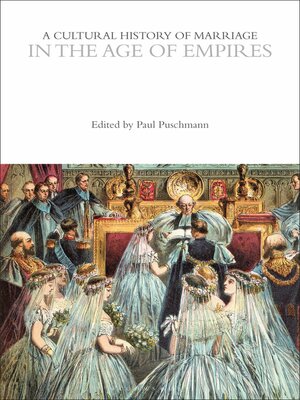A Cultural History of Marriage in the Age of Empires
ebook ∣ The Cultural Histories Series
By Paul Puschmann

Sign up to save your library
With an OverDrive account, you can save your favorite libraries for at-a-glance information about availability. Find out more about OverDrive accounts.
Find this title in Libby, the library reading app by OverDrive.



Search for a digital library with this title
Title found at these libraries:
| Library Name | Distance |
|---|---|
| Loading... |
During the age of empires (1800–1900), marriage was a key transition in the life course worldwide, a rite of passage everywhere with major cultural significance. This volume presents an overview of the period with essays on Courtship and Ritual; Religion, State and Law; Kinship and Social Networks; the Family Economy; Love and Sex; the Breaking of Vows; and Representations of Marriage.
Using this framework, this volume explores global trends in marriage. In nineteenth-century Western Europe, marriage was increasingly regarded as the only way to reach happiness and self-fulfilment. In the United States former slaves obtained the right to marry, leading to a convergence in marriage patterns between the black and white populations. In Latin America, marriage remained less common, but marriage rates were nevertheless on the rise. In African and Asian societies, European colonial powers tried to change indigenous marriage customs like polygamy and arranged marriages, but had limited success. Across the globe, in a time of turbulent political and economic change, marriage and the family remained crucial institutions, the linchpins of society that they had been for centuries.
Using this framework, this volume explores global trends in marriage. In nineteenth-century Western Europe, marriage was increasingly regarded as the only way to reach happiness and self-fulfilment. In the United States former slaves obtained the right to marry, leading to a convergence in marriage patterns between the black and white populations. In Latin America, marriage remained less common, but marriage rates were nevertheless on the rise. In African and Asian societies, European colonial powers tried to change indigenous marriage customs like polygamy and arranged marriages, but had limited success. Across the globe, in a time of turbulent political and economic change, marriage and the family remained crucial institutions, the linchpins of society that they had been for centuries.







